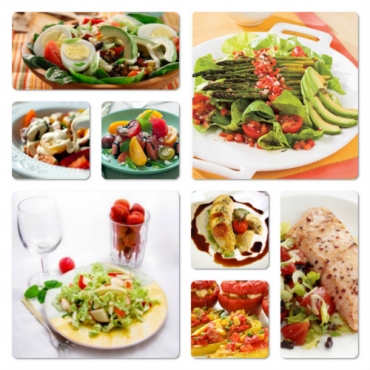In the run-up to the summer months here in the UK, it seems like all the magazines and blogs are filled with tips for healthy eating and getting in shape for the warmer weather. Of course, for the dedicated foodie, this is not a time to deprive oneself, but instead a great excuse to overhaul your diet and check that you are feeding your body the right fuel to feel good and tap into new reserves of energy.
Introducing Low GI
One method of ensuring you choose the right foods is to follow a GI food plan. A few years ago, a Harvard study found that choosing foods with a low glycemic index (low GI) proved effective at regulating blood sugar levels and maintaining metabolism and cardiovascular health. Originally designed to assist diabetics, the GI diet plan experienced a surge in popularity with celebrities like Sharon Stone coming forward to sing its praises.
The glycemic index rates food according to how much they raise your blood sugar level – the lower the better in order to keep your body from undergoing the insulin dips and surges that can lead to weight gain and other health problems. In other words, eating low GI means choosing the healthiest foods that are kindest to your body, instead of unnecessarily cutting out fats, carbs and all the other essential elements that we are often told are ‘bad’ for us. Foods that spike your blood sugar include refined white flour and sugary, processed items – choosing fresh, slow-releasing energy options is the way to go.
Low GI Indian Tweaks
So, that’s the low GI theory… But for the Indian food aficionado, how does this translate? After all, a warming curry and stodgy bowl of rice works so well when it’s miserable outside – are there any better options for the summer months?
Fortunately, the answer to this question is: YES. However, a few tweaks to the Indian menu should be adhered to. First of all, white rice is a no-no as it is listed in the high GI section of the index, along with white bread. Brown rice, the unrefined option, makes a far better choice as it is lighter and easier to digest as well as bringing fibre and a range of vitamins and minerals to the table. If you are partial to a piece of Indian flat-bread with your meal, pick a wholemeal roti or chapati over a hunk of white naan.
Luckily, meats, beans and pulses get a thumbs up on the low GI diet. Both vegetarians and non-vegetarians can enjoy Indian food on this plan. A spiced curry or fragrant dal, cooked from scratch without the sugary additives you might find in store bought curry sauces, make excellent choices for the low GI diet – add vegetables for extra soluble fibre, the type that helps slow the absorption of sugar into the bloodstream. When it comes to fruit and vegetables, the good news is most are low GI. However, there are a few exceptions to avoid at the Indian dinner table: pumpkin, potatoes, watermelon and dates rate higher than most.
So, it turns out that by thinking smart when making your order next time you visit one of London’s best Indian fine dining restaurants, you really can have your Indian food and eat it.

